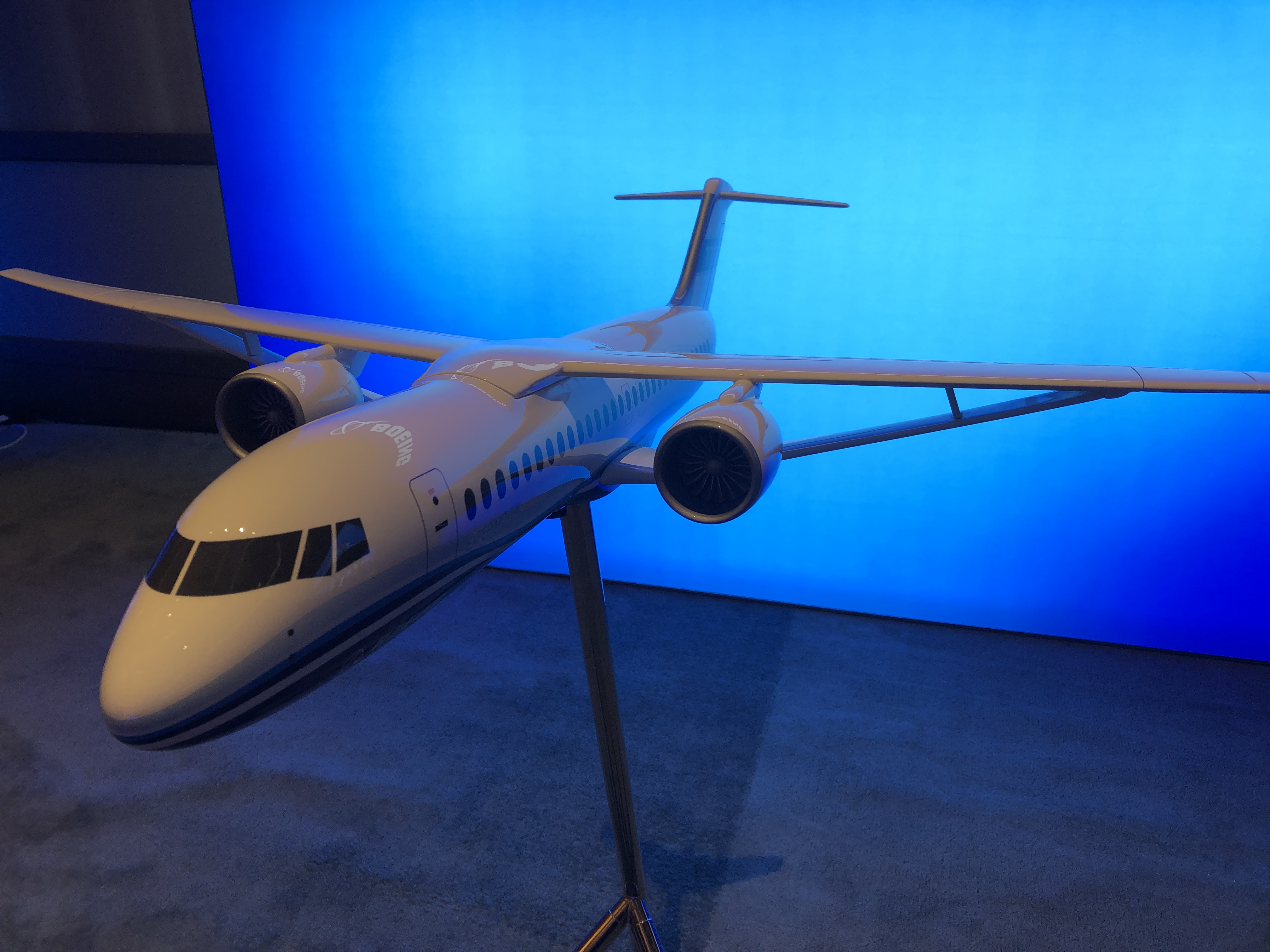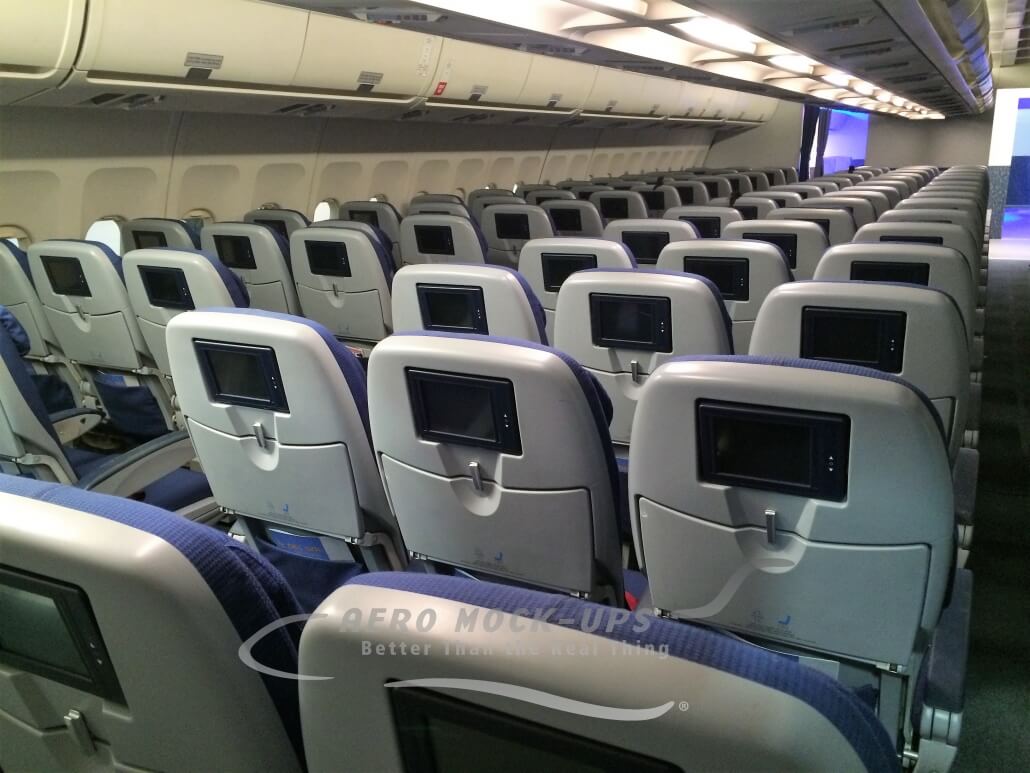Extra Wide Body Aircraft - July 18, 2006 Airbus used the backdrop of the Farnborough Air Show today to unveil a new family of aircraft, the A350 XWB, on a wide body that will offer longer range, higher speeds, increased passenger comfort and improved economy and to do well. The new family will consist of four passenger and truck models. The A350-800 seats 270 passengers in a wide three-class configuration, the A350-900 seats 314 and the A350-1000 is designed to seat 350. These three planes will have a range of 8,500 nm and a speed of Mach 0.85. The entry into service of the A350-900 is expected in 2012. In addition, the A350-900R will fly longer distances as a long-haul aircraft. A350-900F cargo will fill the door.
Passengers on board the A350 XWB will benefit from a cross section that allows for wider seats, wider aisles and more head and shoulder room. 20 percent of cabin humidity and large panoramic windows enhance the passenger experience.
Extra Wide Body Aircraft

A350 X.
Dassault Aviation Unveils $47 Million Falcon 6x Wide Cabin Private Jet
The next generation of engines will be the most fuel-efficient aircraft in its class, with a 30 percent improvement over existing aircraft and a six percent improvement over advanced aircraft. It also provides a quieter flight with less noise and emissions, responding to the high demands of the environment. QC1 for departure and QC 0.5 for arrival will make him a very friendly neighbor.
As a photojournalist, Mike's work has been published in ten languages in more than 20 countries. He has published or managed over 75 publications, each with a different category: sports, automotive, advertising, marketing, design, ad infinitum. Mike has been working in the Internet for over 25 years and was the veteran of five Internet startups before founding New Atlas in 2002. A twin-aisle, also known as a twin-aisle, is a passenger plane with a single fuselage. wide enough to accommodate two-way passenger cars with seven or more seats.
A friend The largest airplanes are up to 20 meters wide and can seat up to the most experienced passengers in many ways.
In comparison, a typical airplane body is 3 to 4 feet (10 to 13) in diameter with a single track,
Super Guppy: The Original Supertransporter Airplane
Wide-body aircraft were originally designed to combine performance and passenger comfort with increased cargo capacity. However, the airlines soon took into account the economic factors and reduced the space for the increasing number of passengers in order to fill more seats and increase the sales and profits.
The term jumbo jet usually refers to a very large jet; examples include the Boeing 747 (the first wide-body and the first "jumbo jet"), the Airbus A380 ("the superjumbo jet"), the Boeing 777X and the Boeing 777 ("the mini jumbo jet").
Side-by-side aircraft typically have a capacity of 160 to 260 passengers, eight seats 250 to 380, nine seats and 350 to 480 passengers.

As of 2017, approximately 8,800 aircraft have been manufactured since 1969, with production reaching 412 per year in 2015.
Boeing 747 Jumbo Jet
After the success of the Boeing 707 and Douglas DC-8 in the late 1950s and early 1960s, airlines began looking for larger aircraft to expand world air travel. Engineers faced many challenges as airlines demanded more passenger space per flight, longer distances and higher operating costs.
Early airplanes, such as the 707 and DC-8, seated passengers on both sides of the aisle, with no more than six seats in a row. Larger planes should be longer, longer (like double-deckers), or wider to accommodate more passenger seats.
Gineers realized that the two floors made it difficult to comply with emergency evacuation orders with the technology available at the time. In the 1960s, it was also believed that private jets would replace large and slow jets. Therefore, it was believed that many subsonic aircraft would become obsolete in passenger travel and eventually become commercial carriers. As a result, airline manufacturers opted for wider fuselages rather than longer ones (747 and eventually the DC-10 and L-1011). With the addition of a second aisle, the wide plane could seat up to 10 people across, but could also be easily converted to carry cargo, carrying two eight-by-eight pallets.
Gineers also committed to building "stretch" versions of the DC-8 (models 61, 62, and 63), as well as longer versions of the Boeing 707 (models -320B and 320C) and 727 (models -200); and the Douglas DC-9 (models -30, -40, and -50), all of which were able to accommodate more seats than their predecessors.
Airliners Of The Future May Sport Some Very Unusual Designs
The age of the largest airliner began in the 1970s with attempts to enter service with the first wide-body, four-engine, two-section Boeing 747.
A new range of tri-jet aircraft soon followed, including the McDonnell Douglas DC-10 and the Lockheed L-1011 TriStar. The first wide-body twinjet, the Airbus A300, entered service in 1974. This period became known as the "big war".
The L-1011 TriStar was introduced to the USSR in 1974 when Lockheed wanted to sell the aircraft to Aeroflot.
/cloudfront-us-east-2.images.arcpublishing.com/reuters/YBL3OW3YBBIQ5OROFCWDL5PX5I.jpg)
After the success of the first wide-body airliner, many follow-up designs came to market over the next 20 years, including the Boeing 767 and 777, the Airbus A330 and A340, and the McDonnell Douglas MD-11. In the "jumbo" category, the Boeing 747's capacity was only exceeded in October 2007, when the Airbus A380 entered commercial service under the name "Superjumbo".
List Of Large Aircraft
The Boeing 747 and Airbus A380 "jumbo jet" each have four engines (quad jets), but the upcoming Boeing 777X ("mini jumbo jet") is a twin.
In the mid-2000s, the rise in aviation fuel prices after 9/11 prompted airlines to look at newer, more fuel-efficient aircraft. Two such examples are the Boeing 787 Dreamliner and the Airbus A350 XWB. The Comac C929 and C939 models can also share this new demographic.
Comparison of Airbus A380 (full length double deck) and Boeing 747-400 (double deck front only)
Production of the large four-engine Boeing 747-8 and Airbus A380 long-haul aircraft is ending as airlines now favor the smaller, more powerful twin-engine A350, 787 and 777 long-haul aircraft.
Airbus A350 Xwb Debuts At Airventure
Although wide-body aircraft have a larger front area (and therefore more drag) than narrow-body aircraft of similar capacity, they have many advantages over their smaller-body counterparts, such as:
British and Russian designers created a larger aircraft similar to the Vickers VC10 and Douglas DC-9, but with a wider fuselage. The British Three-Elev design never got off the drawing board, while the Russian Il-86 design eventually gave way to a conventional nacelle-mounted design, mainly due to the inability to mount large nacelles on the rear fuselage. .
As the performance and reliability of jet engines have increased over the past few decades, the largest single-engine aircraft produced today have only two propellers. A twinjet design is more economical than a three- or four-cylinder jet of equal size.

The increase in modern aircraft also allows aircraft to meet the ETOPS standard, which calculates sufficient safety limits for transoceanic flights. The trijet design was rejected due to high maintenance and fuel costs compared to the twinjet.
Ascend By Cirium Weekly Team Perspective: Why Airbus Is Gearing Up To Re Enter The Widebody Factory Freighter Market
Most modern airliners have two engines, although the heaviest aircraft, the Airbus A380 and Boeing 747-8, are built with four engines. The upcoming twinjet Boeing 777X-9 is approaching the capacity of the previous Boeing 747.
The first version has a fan diameter of 312 cm (123 in) and the larger GE90-115B has a fan diameter of 325 cm (128 in).
It is now as wide as the 3.30 m (130 in) fuselage of the Fokker 100. The GE90's full engine can only be carried by heavy cargo aircraft such as the Antonov An-124, creating logistical problems if the 777 is stable in time for an emergency without spare parts. If the fan is taken offline, the gins can be shipped on a Boeing 747 Freighter.
The Airbus A380's maximum take-off weight of 560 tons (1,230,000 lb) would not be possible without the technology that Guinea developed for the Boeing 777, such as coil-rotation.
Aeroflot To Operate Boeing 777 300er Aircraft With A Premium Reconfigured Cabin
Its Trt 900 fuselage is 290 centimeters (116 in) in diameter, which is slightly smaller than the GE90 fuselage on the Boeing 777. The Trt 900 is designed to fit inside the fuselage of the Boeing 747-400F to facilitate air cargo handling.
The interior of an airplane, known as an airplane, has been changing since the first passenger plane. Today, one- to four-course tours are available on a wide range of aircraft.
Bars and lounges that were once installed on the largest aircraft are gone, but a few are back in first class or business class on the Airbus A340-600,

Emirates has introduced bathrooms for first class passengers on the A380; 25 minutes are reserved for use of the room and the shower is available for a minimum of 1 minute.
Airbus A350 Xwb Landing Hi Res Stock Photography And Images
Depending on the airline's specifications, the size and position of the airline seat will vary
Russian wide body aircraft, wide body aircraft list, airbus wide body aircraft, extra wide sneakers, best wide body aircraft, extra wide drapes, first wide body aircraft, extra wide runner rug, smallest wide body aircraft, small wide body aircraft, extra wide lift recliner, aircraft wide body
0 Comments